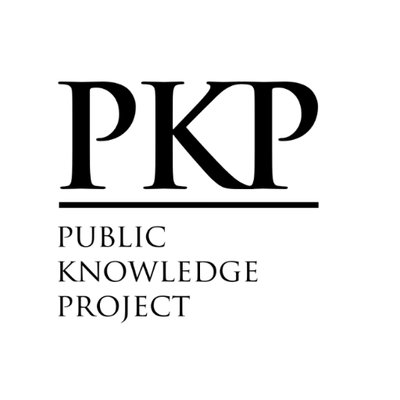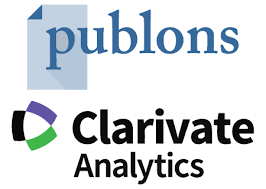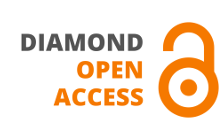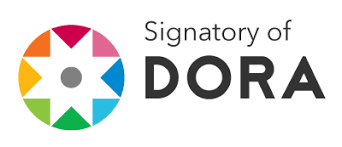Volume-Returns Nexus in Emerging Gulf Markets
Evidence from Saudi Arabia and Dubai (2018–2024)
Keywords:
Financial markets, trading volume, stock returns, cointegration, causality, VAR, Gulf markets.Abstract
Purpose: The aim of this study is to examine the relationship between trading volume and stock returns in the Saudi Stock Exchange (Tadawul) and Dubai Financial Market (DFM) for 2018-2024.
Method: Using a sample of 84 monthly observations for both markets from Investing.com, the research employs advanced econometric techniques, including cointegration analysis, linear regression, Granger causality testing, and Vector Autoregression (VAR) models.
Results: Results exhibit a weak positive association between returns and trading volume in both markets, slightly more in Dubai. Cointegration tests identify a strong long-run equilibrium in the Saudi market, while Dubai displays several complex relationships prone to external impacts. Granger causality tests reveal no significant predictive causality in either direction, indicating that past values of returns and volume do not effectively forecast future movement. VAR analysis highlights that trading volumes are largely determined by their previous values.
Originality: This study offers new insights into the dynamics of GCC markets by comparing the oil economy of Saudi Arabia with the diverse financial hub of Dubai. The findings challenge conventional volume-return models seen in developed economies, suggesting that regional structural forces dominate informational efficiency.
Downloads
References
Abdelghafar Khanfi, R., and R. Qurbakas. 2001. "The Market and Financial Institutions". Alexandria: Alexandria University.
Abdelrahman Tawfiq. 2016. "Financial Markets and the Formation of Investment Portfolios". Cairo: BIMC, Experts Center for Professional Management.
Ahmed, T. 2020. “A Study of the Impact of the Number of Traded Shares on the Return of the Damascus Securities Exchange Index Using Cointegration.” Tishreen University.
Alich, F., and H. Haqa. 2022. “The Relationship between Trading Volume and Stock Returns in the Saudi and Egyptian Markets during the Period 2005–2017.” Martyr Hamma Lakhdar University of El Oued.
Al-Otaibi, M. 2023. “The Relationship between Trading Volumes and Stock Returns in the Saudi Market.” Journal of Economics and Finance 15 (2): 45–67.
Al-Qahtani, M. 2024. “The Impact of Digital Transformation on Trading Volume and Stock Returns in the Saudi Stock Market.” Journal of Financial Markets and Institutions 12 (1): 45–63.
Alshammari, T. S., S. M. Alhabshi, and S. Kassim. 2022. “The Role of Financial Markets in Economic Growth: Evidence from GCC Countries.” Journal of Risk and Financial Management 15 (2): 70. https://doi.org/10.3390/jrfm15020070.
Benameur, A. 2022. “The Effect of Trading Volume on Stock Return: Evidence of Shanghai and Shenzhen Stock Exchange.” Bachar-Tahri Mohamed University, Algeria.
Chilizani Phiri. 2020. “The Relationship between Stock Returns and Trading Volume: Evidence from Borsa Istanbul.” Mulungushi University, Zambia.
Daouda Lawatan Toe, and S. Ouedraogo. 2022. “Dynamic Relationship between Trading Volume, Return, and Returns Volatility: An Empirical Investigation on the Main African Stock Markets.” Thomas Sankara University, Burkina Faso.
Dubai Financial Market (DFM). 2023. Annual Report. https://www.dfm.ae.
Fabozzi, F. J. 2023. "Capital Markets: Institutions, Instruments, and Risk Management:. Cambridge, MA: MIT Press.
Gueyie, J.-P., M. S. Diallo, and M. F. Diallo. 2022. “Relationship between Stock Returns and Trading Volume at the Bourse des Valeurs Mobilieres, West Africa.” International Journal of Financial Studies 10 (1): Article 12. https://doi.org/10.3390/ijfs10010012.
Hamza Al-Zubaidi, Khaled Al-Zaabi, and Abdullah Al-Twairish. 2008. "The Relationship between Trading Volume and Stock Returns in the Arab Financial Market". Amman: Arab Academy for Financial and Banking Sciences.
Hanan Alhussayen. 2022. “The Relationship between Trading Volume and Market Return: A VAR/Granger Causality Testing Approach in the Context of Saudi Arabia.” King Saud University, Saudi Arabia.
Huang, J., Y. Wang, Y. Fan, and H. Li. 2022. “Gauging the Effect of Investor Overconfidence on Trading Volume from the Perspective of the Relationship between Lagged Stock Returns and Current Trading Volume.” Dhurakij Pundit University, Thailand.
Immas Nurhayati. 2022. “The Effect of Trading Volume, Frequency, and Market Capitalization on Stock Return of the Chemical Subsector.” University of Ibn Khaldun Bogor, Indonesia.
Khaled Ahmed Farhan Al-Mashhadani, and Raed Abdel Khaleq Abdullah Al-Obaidi. 2013. "Introduction to Financial Markets". Amman: Dar Al-Ayyam for Publishing and Distribution.
Mamoun Yassin Ahmed Shakhatera. 2005. "The Main Determinants of Stock Market Development: An Applied Study on the Amman Stock Exchange". Amman: Arab Academy for Financial and Banking Sciences.
Mishkin, F. S., and S. G. Eakins. 2021. "Financial Markets and Institutions". 10th ed. London: Pearson.
Mohamed Hani. 2015. "The Impact of Public Shareholding Companies’ Use of Modern Managerial Accounting Methods on the Trading Volume of Their Shares on the Palestine Exchange." Gaza: Al-Azhar University.
Mohamed Saleh Al-Hanawi et al. 2002. "Analysis and Evaluation of Securities". Alexandria: University House.
Mostafa Kamal Taha, and Sherif Mostafa Kamal Taha. 2009. "Stock Exchanges". Alexandria: University Thought House.
Nguyen, P. T. H., and D. N. Le. 2022. "The Nexus between Stock Market Return and Trading Volume on Vietnam’s Stock Market: A Wavelet Approach." Saigon University, Ho Chi Minh City.
Saudi Arabian Monetary Authority. 2018. SAMA Working Paper. https://www.sama.gov.sa.
Saudi Exchange (Tadawul). 2024. “About Saudi Exchange.” https://www.saudiexchange.sa.
Wang, X., Y. Li, and J. Zhang. 2023. “Trading Volume and Stock Returns in Asian Emerging Markets: The Role of Market Volatility.” Emerging Markets Review 57: 101–112. https://doi.org/10.1016/j.ememar.2023.101112.
Downloads
Published
How to Cite
Issue
Section
License
Copyright (c) 2025 Ahlem NAJAH

This work is licensed under a Creative Commons Attribution-NonCommercial-NoDerivatives 4.0 International License.
Authors who publish with this journal agree to the following terms:
- Authors retain copyright and grant the journal right of first publication with the work simultaneously licensed under a Creative Commons Attribution License that allows others to share the work with an acknowledgement of the work's authorship and initial publication in this journal.
- Authors are able to enter into separate, additional contractual arrangements for the non-exclusive distribution of the journal's published version of the work (e.g., post it to an institutional repository or publish it in a book), with an acknowledgement of its initial publication in this journal.
- Authors are permitted and encouraged to post their work online (e.g., in institutional repositories or on their website) prior to and during the submission process, as it can lead to productive exchanges, as well as earlier and greater citation of published work (See The Effect of Open Access).






















